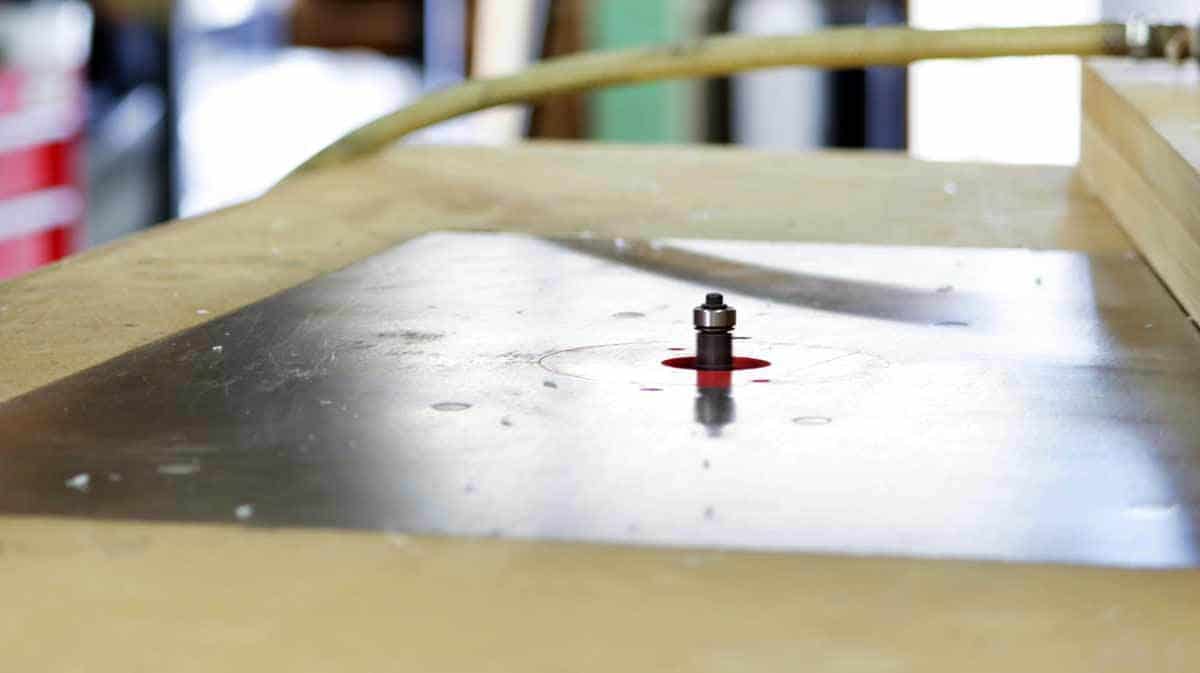Wood Router Table Tips And Techniques To Implement Today

So, you’ve got yourself a wood router table for your workshop or your company and you want to use it for some upcoming woodworking plans? You’re excited and ready to get to work with your router table. We can’t blame you, router tables excite us as well! Here are some wood router table tips that will help you make the most of it.
A good router table is an important staple for your workshop and should pair well a good fixed-base router. If not available plunge router can also be paired, check out Makita RP2301FC review. The benefits are vast and the time cut down on your work will blow your mind, with piece after piece looking great. Whether you are creating a basic fence from scrap wood or making a high-end piece of furniture, fewer errors will be made and you’ll rarely have to start over or discard any lumber if you leverage your table effectively.
Do you know the dos and don’ts of using one of these magical tables? If you don’t that’s okay, that’s precisely what this article is for.
Are you ready to learn all the wood router table tips and techniques for using your router table? Grab a clamp or two and your favorite router and read on…
A Quick Overview of What a Wood Router Table Can Do
We already know that a wood router table is an absolute must-have tool for woodworkers. But why are they so important for woodworkers and carpenters? These awesome cuts are all benefits of a router table:
Dado Cuts: A wood router table is able to do a variety of things for a woodworker. First, a wood router table cuts the perfect dado cut, also referred to as a trench cut. A dado cut is a joint cut. It’s a square sided recess with a flat bottom. A dado cut runs either across or perpendicular to the grain of the wood you’re cutting and is usually used for the ends of shelves and for drawer runners.
Rabbet Cuts: Rabbet cuts are another form of a joint cut. A rabbet cut is a two-sided and open-ended recess, also known as a groove cut to most since it resembles a groove shape. This cut always runs across the edge of the lumber you’re working on, parallel to the grain of the wood. This particular cut is usually used for putting mating shelves together.
Designed Edges: A wood router table is perfect for implementing your own unique design to the edges of your lumber. Or even designs you’ve been wanting to replicate. They work the intricacies and the smallest details to produce a perfectly beautiful and aesthetic edges.
For more router tables information, we have best router table reviews available.

Wood Router Table Tips
Router Table Safety Tips
Safety is the most important factor, as it should be. So first and foremost, we’ll go over the general safety tips you should know while using a wood router table.
Always, always protect your body when woodworking, especially when using any power tools. When using a table router, keep your hands and fingers clear of the bits being used. If possible, place a fitted safeguard that covers the area around the bit so it's not possible to get your hand caught.
Don’t forget to wear safety glasses and ear protectors while operating the router table (or any power tools).
Before you replace a bit on your router table, always examhttps://www.rockler.com/how-to/router-table-basics-quick-tour-router-table-techniquesine the bit. Double check that the bit isn’t chipped or dull. This can result in horrible cuts as well as potential safety issues.
Before you start using your router table you need to make sure that the bit isn’t touching the lumber at all. If you start working the table with them already touching, you’ll start off with too much force and you can damage the router table. You should also make sure the lumber is free from the machine when turning it off.
Never, ever force the bit to go faster. You can damage the bit and ruin it before its lifespan is up. If for some reason force is necessary, try resetting your bit instead. Unnecessary force can result in the wood slipping and a hand finding its way to the bit unintentionally. This is usually followed by a trip to the ER.
Before changing any bits or adjusting them even a bit, turning your router table off isn’t enough. You should use an abundance of caution and unplug the table before doing anything. No power should be going through the router table. When you’re finished with your router table, unplug the machine.
Cutting Tips and Techniques
Rabbet Cut: Make sure you have a rabbet bit picked out and attached properly before you start. These bits run in larger sizes. Once your bit is attached, you can set both the depth of the cut as well as the angle. You can use a feather board to hold the stock down and keep it steady. The problem that usually occurs with a rabbet cut is splintering. Move the bit slowly. If your lumber starts to splinter, adjust the bit for a super light and slow cut.
Dado Cut: When you’re dealing with a dado cut, always cut on the right side of the jig and guide the router away from you. Otherwise, your bit can wander away from where you’re leading it.
Small Molding Cut: Use a wide board to cut any small moldings. If you try cutting a small molding on a skinny board, the skinny board is going to bounce on you. Bouncing will make a mess of your cut.
Tenon Cuts: Tenon cuts on a long board can be extremely easy when using a wood table router. Use parallel guide blocks to keep your lumber steady as you guide it. Make sure your wood is a little bit longer than the final length to prevent your table from tilting and moving on you.
Conclusion
There’s so much you can do with a wood router table. You aren’t limited to the cuts in this guide. These router table tips and techniques are just to get you started. The more you use the table, the more techniques you’ll develop on your own. Keeping in mid these tips and techniques, you can use all types of wood routers on these tables. Check out our best plunge routers reviews as well. Best wood routers reviews are available to enhance you knowledge too. CNC routers are also available, do you wish to know about a CNC router? check here.
